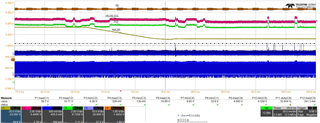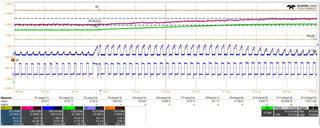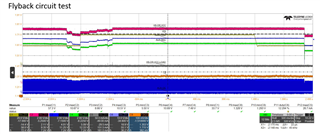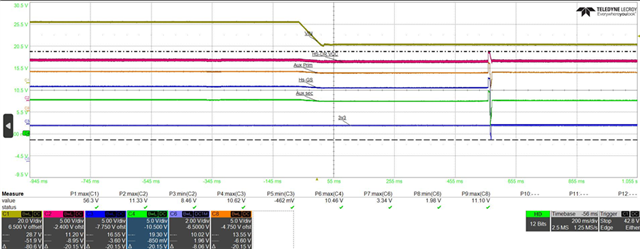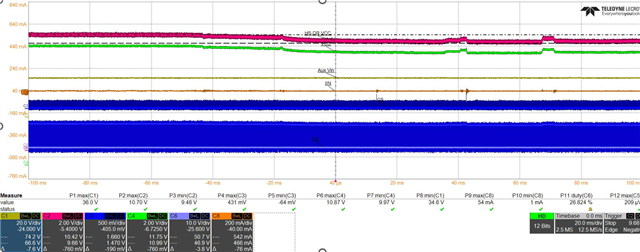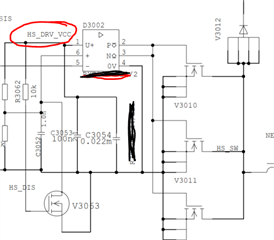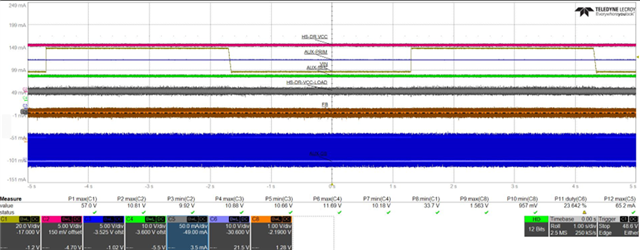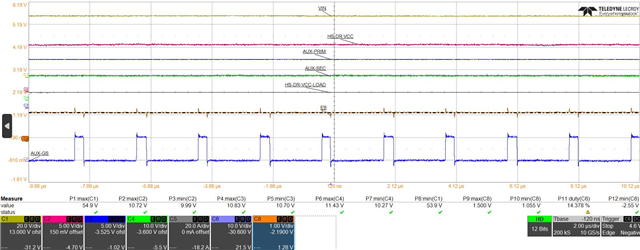Hi ,
We use LM5020 as flyback convert ,
Vin Max is 60V ,Output is 10.4V 1W ,Fsw :450kHZ , CS pin resistor is 0.9ohm
Flyback has 3 output ,the voltage is both 10.4V , Voltage feed back from the Auxiliary source .
Our test condition is :Vin change from 38V to 60V ,Auxiliary output add 0.1A current ,after about 5000 times cycle test , the wave is abnormal
C1 :VIN C2:Auxiliary output C3: CS C6: out pin
The output voltage (C2) is unstable , it down to about 9V and then up to Normal voltage , when the output voltage change from low to normal we can find CS pin voltage above 0.5V ,the duty increade , but the FB voltage is stable (Picture 3 ,C8)
Question : 1. Why the output unstable ?
2. The output is unstable ,but the FB voltage is stable ,is it right ?
3. CS over 0.5v ,but it doesn't like OCP ,
4. Duty increase lead to CS voltage increase , or CS increase lead to Duty increase ?
Looking forward to your reply ,thank you.
